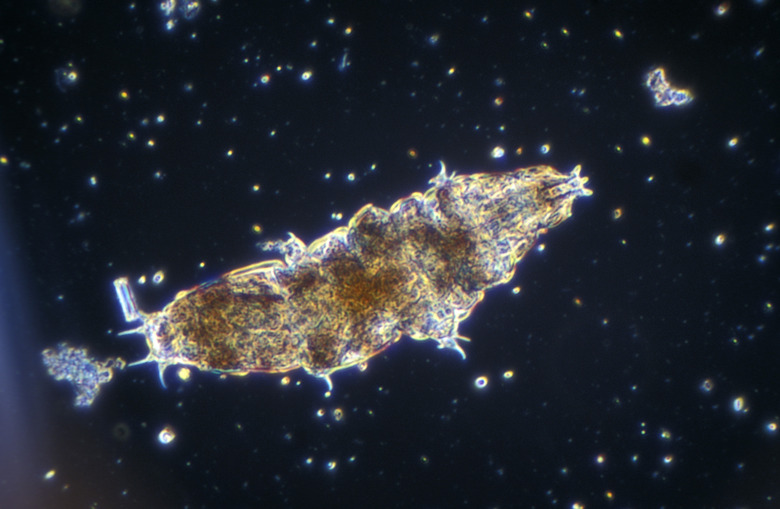The World's Most Rugged And Weirdest Looking Animals Are Stranded On The Moon
Thousands of tardigrades are stranded on the moon, after a spacecraft containing the nearly indestructible "moss piglets" crash landed there last April.
Tardigrades already had quite the reputation on Earth, thanks in part to their looks. The itty bitty animals are only about .02 inches long, but they've been given the nicknames of "moss piglets" and "water bears" because, well, that's what they kind of look like? With a tiny snout, a lumpy, plump body, eight squat legs that end in claws and a face somewhat reminiscent of a sumo wrestler, the animals could definitely win a beauty pageant under the category "So Ugly They're Cute."
But tardigrades aren't just known for being oddball cuties. They're also a scientific marvel for their near inability to die. The creatures are almost comically indestructible – they can survive in nearly every condition found here on Earth, from volcanoes to the Arctics. They can handle extreme temperature, extreme pressure and extreme radiation. They can even come back to life after decades of dehydration and starvation. Oh, and they're the first animal known to be able to survive in the harsh conditions of space. There's essentially nothing that a human could do that would kill these hardcore little beings.
And now, thousands of them are on the moon.
Umm, How Did That Happen?
Umm, How Did That Happen?
It all started with the journey of an Israeli spacecraft called the Beresheet. The privately funded Israeli craft was supposed to soft land on the moon back in April and take research photos, but unfortunately a hard landing thwarted that research mission.
But the mission wasn't a total wash. Onboard was a collection of archives from the Arch Mission, an organization aimed at creating a "backup" of Earth that can be stored in space. Along with a 30 million page library of the history of human civilization (compressed into a nanotechnology device that looks like a DVD), the team wanted to include some biological material. So, they gathered the most rugged animal they could think of and sent them to the moon.
So Now They’re Just ...There?
So Now They're Just ...There?
Yup, they're there! That's about all we know, although scientists are trying to make some educated guesses about what life looks like for them up there, or if they're even alive at all.
A few scientists told Popular Science that knowing what we know about tardigrades, they may not be what we think of as alive and thriving after the journey to the moon. It's also possible that extreme heat or radiation actually did some of them in for good. And with the harsh conditions of space and the lack of food and water, they could be in the process of shutting down their bodies into what we might think of as a dormant or mummified state. But they can last like that for decades, and it's possible they got lucky with some relatively good positioning during their crash landing. So if someone were to, say, fly to the moon in 40 years and give them a little food and water, they might be able to bring these tardigrades back from the near-dead.
Is the scenario of a future astronaut going on a tardigrade mummy mission to the moon at all likely? Nope! But Hollywood, if you're listening, it's a tale we'd buy a movie ticket to any day.
Cite This Article
MLA
Dragani, Rachelle. "The World's Most Rugged And Weirdest Looking Animals Are Stranded On The Moon" sciencing.com, https://www.sciencing.com/the-worlds-most-rugged-and-weirdest-looking-animals-are-stranded-on-the-moon-13720862/. 12 August 2019.
APA
Dragani, Rachelle. (2019, August 12). The World's Most Rugged And Weirdest Looking Animals Are Stranded On The Moon. sciencing.com. Retrieved from https://www.sciencing.com/the-worlds-most-rugged-and-weirdest-looking-animals-are-stranded-on-the-moon-13720862/
Chicago
Dragani, Rachelle. The World's Most Rugged And Weirdest Looking Animals Are Stranded On The Moon last modified August 30, 2022. https://www.sciencing.com/the-worlds-most-rugged-and-weirdest-looking-animals-are-stranded-on-the-moon-13720862/
